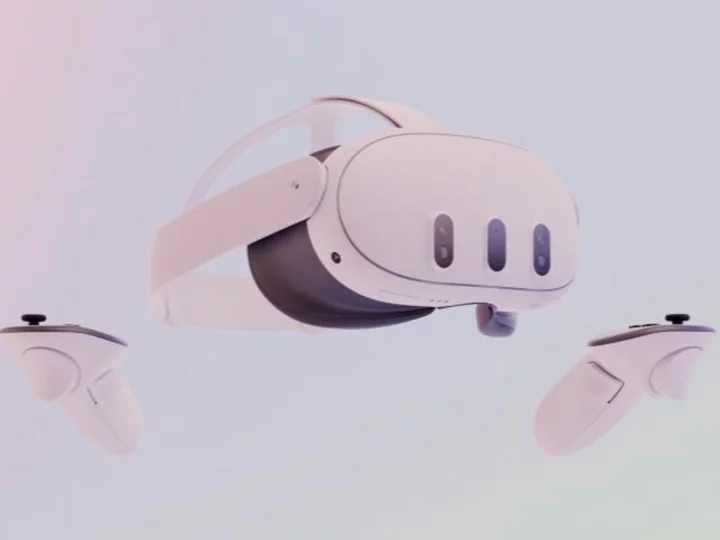Meta is moving forward in its efforts to dominate the AR world with the new and improved Meta Quest 3.
Unveiled by CEO Mark Zuckerberg at the company's virtual Meta Connect event Wednesday, the headset starts at $500 and is a complete redesign of earlier models. The Quest 3, first announced in June, offers improved performance, immersive new mixed-reality features and a sleeker, more comfortable design.
With a much stronger processor, higher-resolution display, revamped Touch Plus controllers and a 40% slimmer physique, the Quest 3 is a big step up from its predecessors. The Meta Quest 2 allows for strictly virtual reality, while the Meta Quest Pro has advanced passthrough cameras for seeing your actual surroundings, but it costs a whopping $1,000.
Most importantly, the Quest 3 has support for Meta Reality, allowing users to enjoy mixed-reality experiences that blend the real world with the virtual one — for example, you can play a virtual piano on your real-life coffee table.
"If you pick up a digital ball and throw it at the physical wall, it'll bounce off it," Zuckerberg said at Meta Connect Wednesday. "If someone's shooting at you and you want to duck the fire, you just get behind your physical couch."
The Meta Quest virtual library is fully accessible with the Quest 3 -- a library that now features VR-friendly Roblox, released Wednesday, and is set to add X Box cloud gaming in December, giving gamers the chance to play titles like Halo and Minecraft on a large screen anywhere.
The headset is available for preorder now and officially hit stores on Oct. 10, available in two storage options (128GB and 512GB).
Meta's newest headset comes three years after the Quest 2, under a year after the Quest Pro and under four months after the Apple Vision Pro.
Dubbed by Zuckerberg as the "first mainstream mixed reality headset" the Quest 3 is part of an ongoing arms race between two of tech's biggest players to command the headset space - and Zuckerberg's personal vision for a next-generation internet where users can interact with each other in virtual spaces resembling real life. And it comes in at a much cheaper price than the Apple alternative (which will cost you $3,499, to be exact) and is still mainly a VR headset with alternative reality options, while Apple's product is a dedicated mixed reality experience.
To get ahead of Apple's June unveiling of the Vision Pro, Zuckerberg teased the Meta Quest 3 just days before its rival's big announcement. But the two companies had a tense relationship even before Apple's entry into the market. They have competed over news and messaging features, and their CEOs have traded jabs over data privacy and app store policies. Last February, Meta said it expected to take a $10 billion hit in 2022 from Apple's move to limit how apps like Facebook collect data for targeted ads.
Meta has until now been the dominant player in the headset market, but it has so far struggled to attract a mainstream audience for its VR headset products. The Wall Street Journal reported last year that Meta had just 200,000 active users in Horizon Worlds, its app for socializing in VR. And in 2023, IDC estimates just 10.1 million AR/VR headsets will ship globally from the entire market, far below the tens of millions of iPhones Apple sells each quarter.
Morgan Stanley analysts called Apple's Vision Pro a "moonshot" effort following its June announcement, saying the product "has the potential to become Apple's next compute platform," but that the company has "much to prove" before the headset's launch next year.
The biggest fight may not be between tech giants, but for the general public's acceptance. Many analysts say the biggest hurdle to consumer adoption of mixed reality headsets is ensuring a wide range of potential use cases and experiences available on the devices. While Meta has introduced features that let users play games, explore virtual worlds, watch YouTube videos, workout, chat with friends and more, it has yet to convince most consumers that the device is worthwhile.

